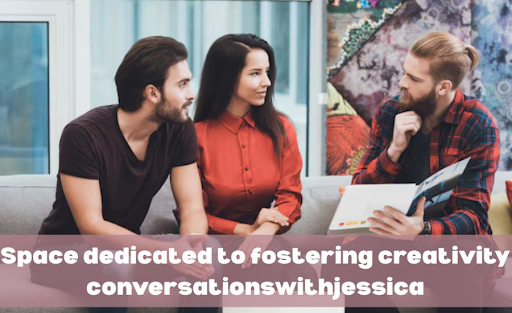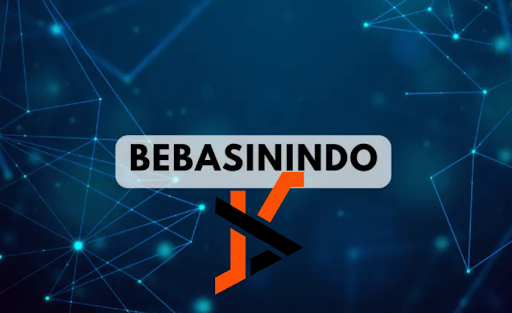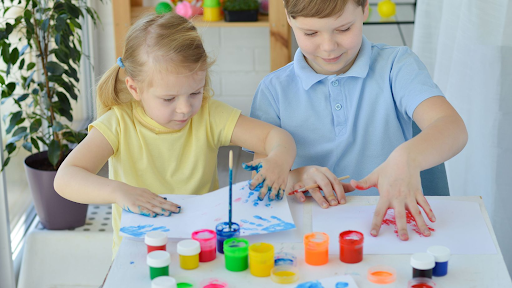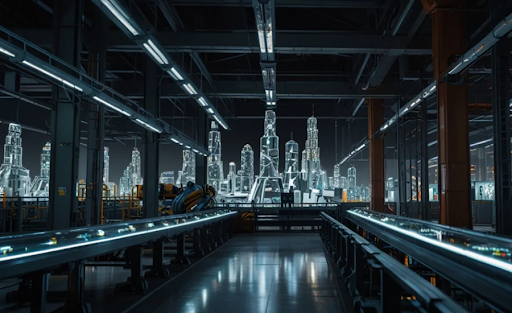Revamp & Revitalize: A Space Dedicated to Fostering Creativity ConversationsWithJessica
Introduction
In today’s fast-paced digital world, having a space dedicated to fostering creativity ConversationsWithJessica is more crucial than ever. This is not just about physical space but also emotional, intellectual, and digital arenas where individuals feel free to express, explore, and experiment. Creativity thrives in environments that promote curiosity, welcome diverse viewpoints, and support iterative thinking. ConversationsWithJessica was founded on the belief that structured debates are not the same as authentic conversations. Instead, this space is cultivated for people who want to ignite new ideas without judgment, ego battles, or rigid structures.
The Philosophy Behind Creativity-Driven Spaces
Creative environments begin with intentionality. This chapter explores the philosophy behind creating a space where ideas are nurtured instead of stifled. A space dedicated to fostering creativity ConversationsWithJessica is purposefully curated to remove barriers to thought and engagement. The idea is to facilitate flow, foster emotional safety, and dismantle traditional hierarchies of communication. These spaces support brainstorming, creative storytelling, artistic experimentation, and collaborative innovation. From corporate boardrooms to casual living room conversations, the underlying principle is the same: empower imagination.
The Power of Conversations in Creative Spaces
Creativity flourishes through meaningful dialogue. Rather than rehearsed scripts or one-sided lectures, ConversationsWithJessica emphasizes authentic, reciprocal engagement. These discussions often begin with open-ended prompts that provoke thought and feeling. Participants are encouraged to listen deeply, respond thoughtfully, and build on each other’s insights. The result is a creative synergy that produces ideas beyond what any individual could generate alone. In this way, the space dedicated to fostering creativity ConversationsWithJessica becomes a breeding ground for collaboration and innovation.
Designing the Perfect Creative Environment
How can we architect a space that supports creative exploration? Start with ambiance. Lighting, texture, color schemes, and soundscapes all affect how our brains engage with ideas. Incorporate natural elements like plants or wood to ground energy and provide calm. Seating arrangements should promote equality and inclusion—everyone should feel they have a voice. Tech tools like collaborative whiteboards, idea boards, and AI-supported brainstorming apps can amplify potential. In a digital context, platforms like Zoom, Miro, or Notion can mimic the dynamic energy of in-person creative rooms.
Emotional and Psychological Safety
Psychological safety is foundational in a space dedicated to fostering creativity ConversationsWithJessica. Without it, participants may hesitate to share, fearing judgment or rejection. Establishing emotional ground rules—such as mutual respect, no interruptions, and confidentiality—allows participants to be vulnerable and brave with their ideas. Encouraging self-expression, affirming each contribution, and embracing “mistakes” as learning points creates a sense of collective growth. When people feel emotionally supported, they are more likely to think divergently and innovate freely.
The Process of Creative Dialogue
ConversationsWithJessica follows a flexible structure designed to balance flow with direction. Sessions might begin with a “check-in” where participants express what’s currently on their minds. This builds presence and empathy. Next, prompts guide the discussion toward creative goals. These prompts might include metaphor-based thinking (“What if your idea was a color?”) or vision-mapping exercises. The facilitator ensures everyone has equal airtime and guides the group to explore tangents without losing the core thread. Closure involves reflections and possible next steps.
Encouraging Diverse Participation
Inclusion is not optional in a truly creative space. Diverse voices bring varied life experiences, perspectives, and cultural frameworks—each adding richness to the idea ecosystem. This space dedicated to fostering creativity ConversationsWithJessica actively seeks to include underrepresented voices and create mechanisms for equitable participation. This might mean providing asynchronous options, offering translation or accessibility tools, or adapting facilitation styles to honor different cultural communication norms.
Tools That Catalyze Creativity
Effective creative spaces use the right mix of analog and digital tools. Analog tools like vision boards, sketchpads, or storytelling cards spark tactile engagement, while digital platforms streamline sharing and storing ideas. Templates for journey mapping, empathy interviews, and design sprints can provide scaffolding without stifling creativity. ConversationsWithJessica integrates these tools seamlessly into its workflow, ensuring participants can choose what resonates with their process.
Nurturing a Creative Mindset
Even with the best tools and structure, creativity requires the right mindset. A space dedicated to fostering creativity ConversationsWithJessica emphasizes growth over perfection, questions over answers, and exploration over conclusion. Participants are coached to embrace curiosity, reframe failures as feedback, and tap into intrinsic motivation. Mindfulness practices, journaling prompts, and creative rituals (like starting with a quote or meditation) help reset and center focus.
Examples from the Community
Real-life stories provide powerful insights. Artists have used ConversationsWithJessica to break through blocks and find new inspiration. Startups have generated breakthrough ideas in their concept labs. Educators have adapted the framework to support student-led learning. What these stories share is a pattern of transformation: individuals stepping into their creativity more confidently, collaboratively, and sustainably thanks to this structured, empathetic space.
Expanding into Virtual and Hybrid Spaces
With remote work and global collaboration becoming the norm, the demand for virtual creative environments is growing. ConversationsWithJessica has embraced this shift by adapting its methods for online communities. This includes digital prompts, scheduled creativity hours, breakout group facilitation, and interactive templates. These tools allow the space dedicated to fostering creativity ConversationsWithJessica to be accessed from anywhere in the world, keeping inclusivity and innovation at the core
Measuring Creative Success
Unlike traditional output metrics, creative success is more nuanced. Instead of just counting ideas, measure engagement, transformation, and insight. Participant feedback, idea implementation rate, and even mood tracking can reveal the impact of the space. ConversationsWithJessica encourages journaling and shared reflections post-session to help participants recognize their growth and capture insights.
Common Challenges and Their Solutions
Creative spaces can falter due to unclear goals, dominance by certain voices, or lack of follow-through. Solutions include clear agenda-setting, rotating facilitation, creating opt-in roles, and celebrating micro-wins. ConversationsWithJessica has developed troubleshooting guides to help facilitators sustain energy and momentum.
Embedding Creativity in Daily Practice To make creativity habitual, embed it into daily routines. Morning freewrites, idea walks, gratitude journaling, and even doodle breaks can make a big difference. The space dedicated to fostering creativity ConversationsWithJessica encourages personal creative rituals that individuals can practice alone or in small groups. These rituals foster continuity and momentum outside of structured sessions.
Training Facilitators and Leaders
Effective facilitation is key to holding creative space. ConversationsWithJessica offers training programs for facilitators to develop skills in deep listening, dynamic guiding, and conflict navigation. Leaders learn how to foster trust, model vulnerability, and manage the ebb and flow of creative energy. Certification programs ensure facilitators understand the ethos and adapt it to their own communities.
The Future of Creative Conversations
Looking ahead, the role of creative dialogue will only grow. From policy think tanks to climate action labs, we need brave spaces where unconventional ideas can emerge. ConversationsWithJessica plans to expand into youth mentorship, artistic residencies, and corporate innovation. This space dedicated to fostering creativity ConversationsWithJessica will continue to evolve, led by a global community of creative thinkers and empathetic changemakers.
Conclusion
Creating a space dedicated to fostering creativity ConversationsWithJessica is not a luxury—it’s a necessity for innovation, healing, and collective transformation. By building thoughtful environments, nurturing respectful dialogue, and embracing diverse input, we can unlock the full spectrum of human imagination. Whether in-person or online, this approach fosters more than just ideas—it fosters meaningful connection and co-creation.
FAQs: Space Dedicated to Fostering Creativity ConversationsWithJessica
Q1. What is ConversationsWithJessica?
A. ConversationsWithJessica is a creative platform designed to support open, honest, and judgment-free discussions that inspire imagination and collaboration.
Q2. What makes this space ideal for creativity?
A. It combines emotional safety, inclusive dialogue, and thoughtfully designed environments to help people express their ideas freely and confidently.
Q3. How is creativity encouraged in this space?
A. Participants are guided through structured yet flexible conversations, creative prompts, and interactive tools that unlock innovative thinking.
Q4. Is this space only for artists or professionals?
A. No, it’s open to anyone—students, professionals, creators, or anyone seeking inspiration and meaningful conversations.
Q5. Can ConversationsWithJessica be used online?
A. Yes, the space also exists virtually, using digital tools and platforms to connect creative minds around the world.
Q6. What types of tools are used in this space?
A. A blend of analog (journals, sketchpads) and digital (whiteboards, collaborative software) tools are used to enhance the creative process.
Q7. Why is emotional safety important for creativity?
A. People are more likely to share original ideas when they feel respected, heard, and free from criticism or ego-driven competition.
Q8. How does this space handle different perspectives?
A. It embraces diversity by encouraging multiple viewpoints, ensuring every voice is heard and valued equally.
Q9. Can this model be used in schools or businesses?
A. Absolutely. Educators, leaders, and teams can adopt its principles to promote creativity in classrooms, offices, and beyond.
Q10. How does ConversationsWithJessica measure creative success?
A. Success is measured through engagement, personal growth, idea development, and the depth of meaningful connections made during sessions.






